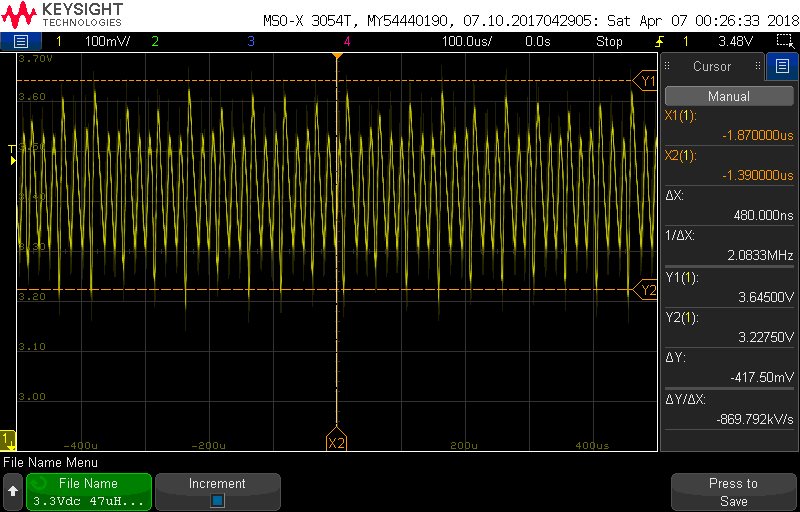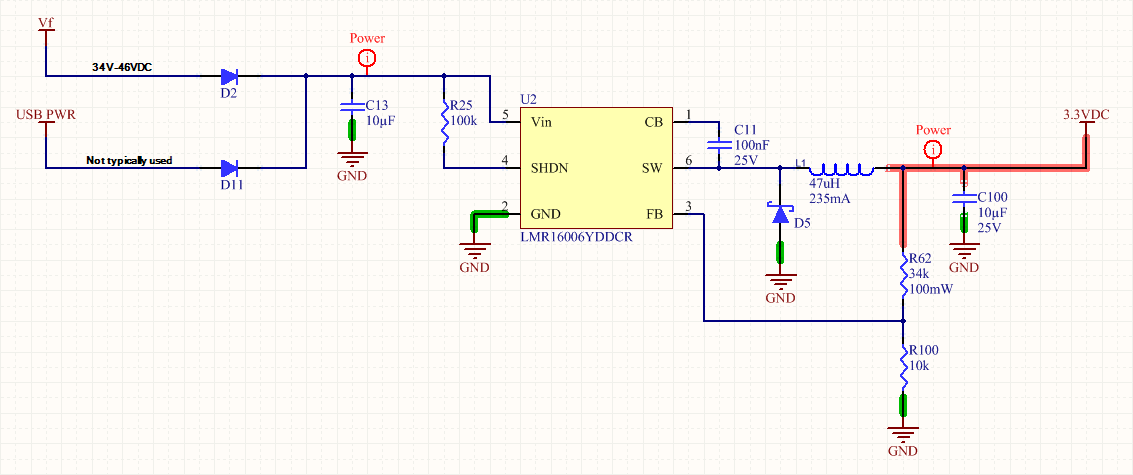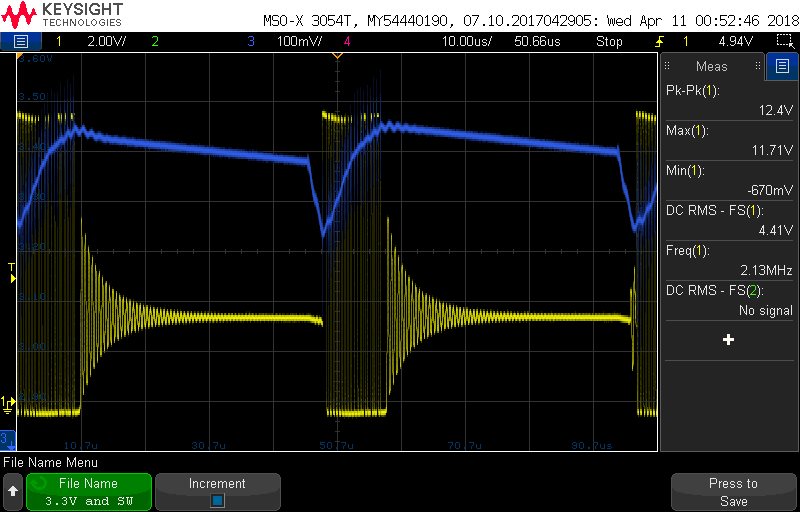I am using a LMR16006Y (2.1MHz) to power a 3.3VDC 50mA load from a 34V - 46V DC input. I am seeing complex ripple that is about 600mV peak to peak whose frequency (20k-30kHz) is well below the switching frequency. If I zoom in I can see the switching ripple riding on this waveform at 2.1MHz and a duty cycle of ~14%, so I don't think this is being caused by the switching ripple. I'm afraid the volatility in my power source will cause EMC issues in my product when I go for compliance testing.
This oscillograph was taken under a normal load and shows the ripple I am seeing.
The following oscillograph show what the ripple does if I add an additional load of 100mA (32 ohm resistor) to the output. I did this to rule out the supply running in DCM (Discontinuous Mode). Based off of the waveform change, I think I was in DCM and am redesigning the converter accordingly. However the ripple is still way to much, so I believe these is an additional issue.
Below is the schematic for the SMPS. I have tried swapping L1 for the more appropriately sized 100µH inductor, but this has not affected the output at all.
Any help on this would be greatly appreciated.





